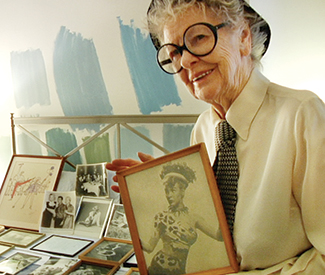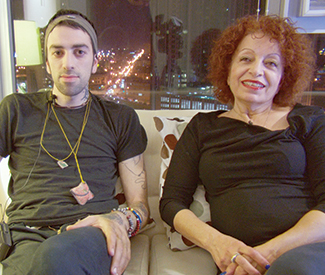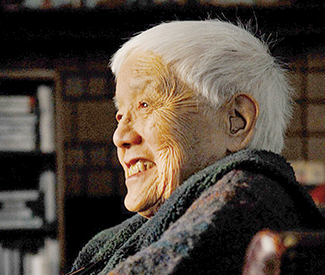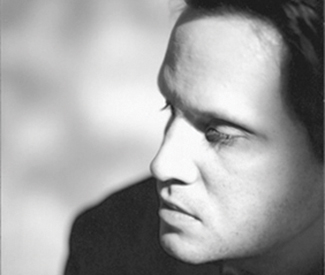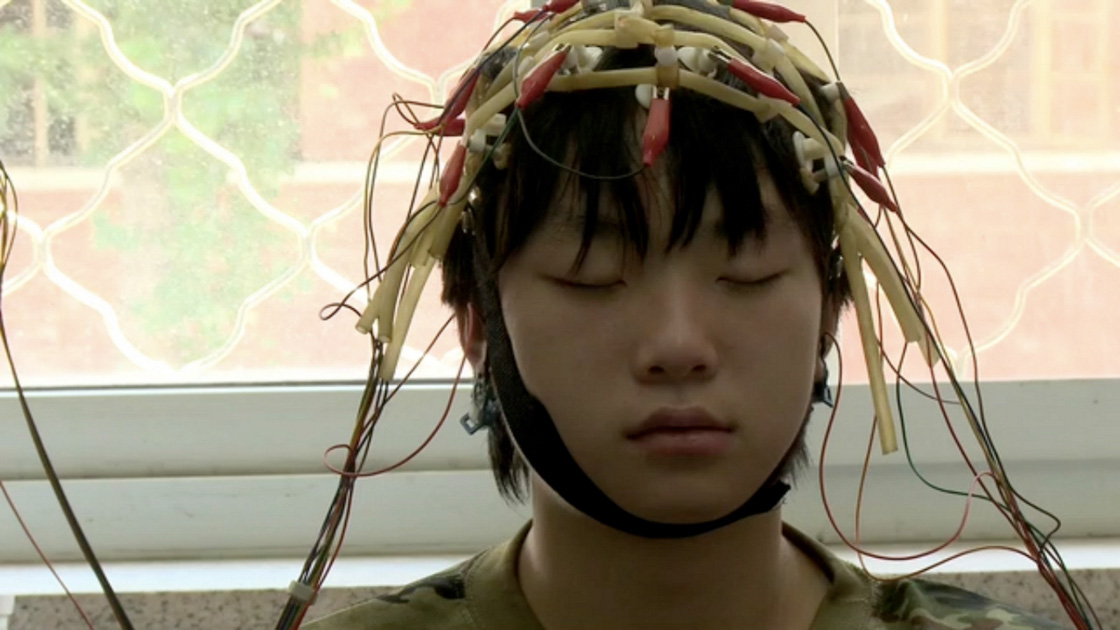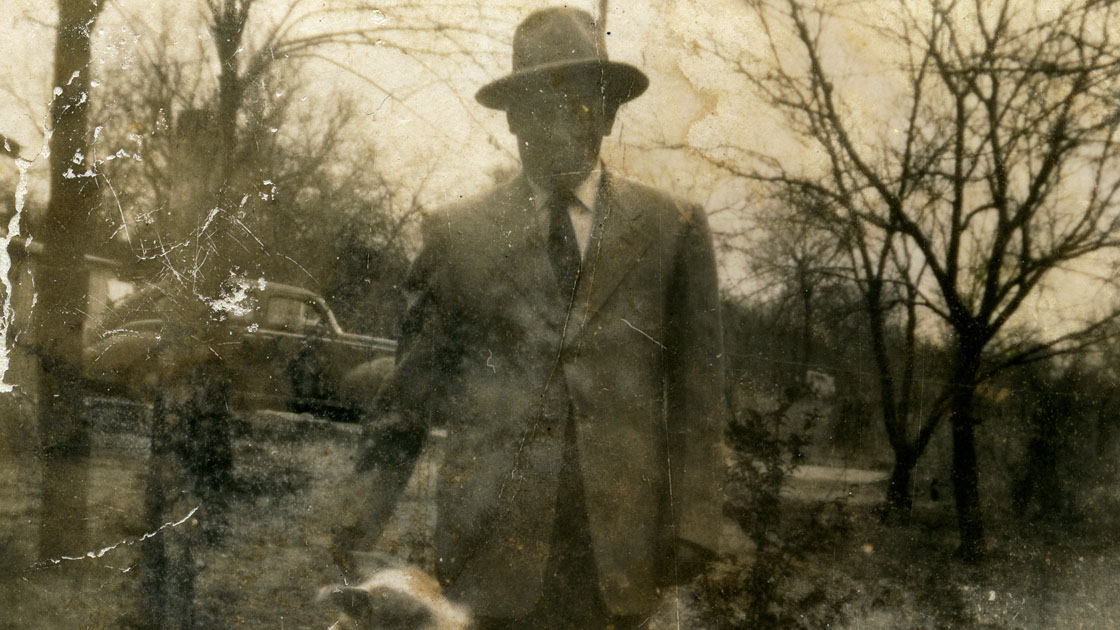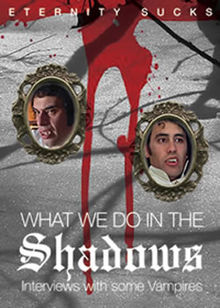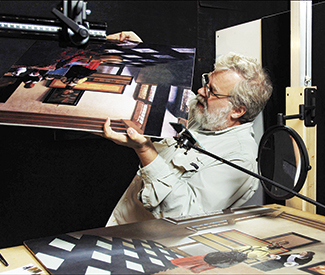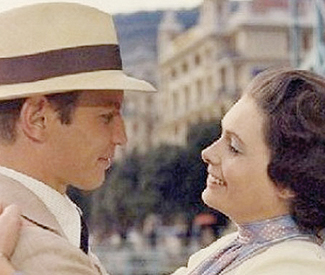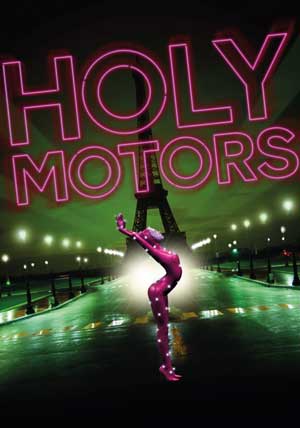WEDNESDAY 26
ROCK
50 Mason Social House: 50 Mason, San Francisco. The Ever After, The Proofs, 8pm, free.
Bender’s: 806 S. Van Ness, San Francisco. Noise Pop Happy Hour: CCR Headcleaner, Skate Laws, Bicycle Day, 5pm, free.
Bottom of the Hill: 1233 17th St., San Francisco. Noise Pop 2014: Strange Vine, French Cassettes, Dante Elephante, Irontom, 7pm, $10-$12.
Brick & Mortar Music Hall: 1710 Mission, San Francisco. Noise Pop 2014: The Fresh & Onlys, Cool Ghouls, Sandy’s, Luke Sweeney, 8pm, $12-$14.
The Chapel: 777 Valencia, San Francisco. Noise Pop 2014: Papercuts, Vetiver, The Donkeys, Eric D. Johnson, DJ Britt Govea, 8pm, $15-$18.
El Rio: 3158 Mission, San Francisco. Beast Fiend, Neurotrash, Twat, 8pm, $5.
Hemlock Tavern: 1131 Polk, San Francisco. Dancer, Gravys Drop, 8:30pm, free.
Hotel Utah: 500 Fourth St., San Francisco. Thieves of Malta, Great Highway, Future Us, 8pm, $8.
The Knockout: 3223 Mission, San Francisco. Little Person, April & The Paradigm, Harriot, The Tender Few, DJ Ryan Smith, 8pm, $5-$8.
Milk Bar: 1840 Haight, San Francisco. The Midnight Snackers, Spooky Flowers, Jet Trash, Friends W/O Benefits, 8pm, $5.
Rickshaw Stop: 155 Fell, San Francisco. Ty Segall, Burnt Ones, Endless Bummer, 8pm, sold out.
SFSU Campus, Cesar Chavez Student Center: 1650 Holloway, San Francisco. Midnight Sons, Adult Books, Wyatt Blair, Bicycle Day, 6pm, free.
Slim’s: 333 11th St., San Francisco. Cibo Matto, Salt Cathedral, 8pm, $26.
DANCE
Beaux: 2344 Market, San Francisco. “BroMance: A Night Out for the Fellas,” 9pm, free.
The Cafe: 2369 Market, San Francisco. “Sticky Wednesdays,” w/ DJ Mark Andrus, 8pm, free.
Cat Club: 1190 Folsom, San Francisco. “Bondage A Go Go,” w/ DJs Damon, Tomas Diablo, & guests, 9:30pm, $5-$10.
Club X: 715 Harrison, San Francisco. “Electro Pop Rocks,” 18+ dance night with Borgeous, DJ Audio1, Non Sequitur, Self Dustrukt, Nano Sage, LegitSoda, more, 9pm, $10-$20.
Edinburgh Castle: 950 Geary, San Francisco. “1964,” w/ DJ Matt B & guests, Second and Fourth Wednesday of every month, 10pm, $2.
Elbo Room: 647 Valencia, San Francisco. “Bodyshock,” w/ Chrissy Murderbot, Blk Rainbow, DJ Crackwhore, Unit 77, 9pm, $8-$10.
F8: 1192 Folsom, San Francisco. “Housepitality,” w/ Acidman, Tyrel Williams, Bai-ee, Mrs. Blythe, 9pm, $5-$10.
Infusion Lounge: 124 Ellis, San Francisco. “Indulgence,” 10pm
Lookout: 3600 16th St., San Francisco. “What?,” w/ resident DJ Tisdale and guests, 7pm, free.
Madrone Art Bar: 500 Divisadero, San Francisco. “Rock the Spot,” 9pm, free.
MatrixFillmore: 3138 Fillmore, San Francisco. “Reload,” w/ DJ Big Bad Bruce, 10pm, free.
Q Bar: 456 Castro, San Francisco. “Booty Call,” w/ Juanita More, Joshua J, guests, 9pm, $3.
HIP-HOP
Neck of the Woods: 406 Clement, San Francisco. “Over the Hump,” w/ Children of the Funk, 10pm, free.
The NWBLK: 1999 Bryant, San Francisco. Noise Pop 2014: Our Vinyl Weighs a Ton, Stones Throw Records showcase featuring performances by Peanut Butter Wolf, J Rocc, Jonwayne, and Knxwledge at 8pm, preceded by a screening of the documentary Our Vinyl Weighs a Ton: This Is Stones Throw Records at 5pm, $20-$25.
Skylark Bar: 3089 16th St., San Francisco. “Mixtape Wednesday,” w/ resident DJs Strategy, Junot, Herb Digs, & guests, 9pm, $5.
ACOUSTIC
Cafe Divine: 1600 Stockton, San Francisco. Craig Ventresco & Meredith Axelrod, 7pm, free.
Fiddler’s Green: 1333 Columbus, San Francisco. Terry Savastano, Every other Wednesday, 9:30pm, free/donation.
Plough & Stars: 116 Clement, San Francisco. The Toast Inspectors, Last Wednesday of every month, 9pm
JAZZ
Amnesia: 853 Valencia, San Francisco. Gaucho, Eric Garland’s Jazz Session, The Amnesiacs, 7pm, free.
Balancoire: 2565 Mission St., San Francisco. “Cat’s Corner,” 9pm, $10.
Boom Boom Room: 1601 Fillmore, San Francisco. Royal Jelly, 9:30pm, $5.
Burritt Room: 417 Stockton St., San Francisco. Terry Disley’s Rocking Jazz Trio, 6pm, free.
Club Deluxe: 1511 Haight, San Francisco. Patrick Wolff Quartet, 9pm, free.
Jazz Bistro at Les Joulins: 44 Ellis, San Francisco. Charles Unger Experience, 7:30pm, free.
Le Colonial: 20 Cosmo, San Francisco. The Cosmo Alleycats featuring Ms. Emily Wade Adams, 7pm, free.
Revolution Cafe: 3248 22nd St., San Francisco. Michael Parsons Trio, Every other Wednesday, 8:30pm, free/donation.
Sheba Piano Lounge: 1419 Fillmore, San Francisco. Sebastian Parker Trio, 8pm
Top of the Mark: One Nob Hill, 999 California, San Francisco. Ricardo Scales, Wednesdays, 6:30-11:30pm, $5.
Yoshi’s San Francisco: 1330 Fillmore, San Francisco. Thelonious Monk Institute All-Star Sextet with Ambrose Akinmusire & Lisa Henry, 8pm, $16-$20.
Zingari: 501 Post, San Francisco. Amanda King, 7:30pm, free.
INTERNATIONAL
Bissap Baobab: 3372 19th St., San Francisco. “Baobab!,” timba dance party with DJ WaltDigz, 10pm, $5.
Cafe Cocomo: 650 Indiana, San Francisco. “Bachatalicious,” w/ DJs Good Sho & Rodney, 7pm, $5-$10.
Cigar Bar & Grill: 850 Montgomery, San Francisco. Individúo, 8pm
Make-Out Room: 3225 22nd St., San Francisco. “International Freakout A Go-Go,” 10pm, free.
Pachamama Restaurant: 1630 Powell, San Francisco. Cafe Latino Americano, 8pm, $12.
The Rite Spot Cafe: 2099 Folsom, San Francisco. Redwood Tango Ensemble, 8pm, free.
BLUES
Biscuits and Blues: 401 Mason, San Francisco. The Cash Box Kings, 7:30 & 9:30pm, $15.
The Royal Cuckoo: 3202 Mission, San Francisco. Big Bones & Chris Siebert, 7:30pm, free.
The Saloon: 1232 Grant, San Francisco. Takezo, 9:30pm
EXPERIMENTAL
Center for New Music: 55 Taylor, San Francisco. Loop 2.4.3, Prism, 8pm, $5-$12.
SOUL
Monarch: 101 Sixth St., San Francisco. “Color Me Badd,” coloring books and R&B jams with Matt Haze, DJ Alarm, Broke-Ass Stuart, guests, Wednesdays, 5:30-9:30pm, free.
THURSDAY 27
ROCK
Amnesia: 853 Valencia, San Francisco. “Mods v. Rockers,” w/ Little Wild, The M-Tet, DJ Dutch Crunch, 8:30pm, $5-$7.
Bender’s: 806 S. Van Ness, San Francisco. Noise Pop Happy Hour: Dude York, A Million Billion Dying Suns, A-1 & Rawdad, 5pm, free.
Boom Boom Room: 1601 Fillmore, San Francisco. Hibbity Dibbity, Big Baby Guru, Wag, 9:30pm, $5 advance.
Bottom of the Hill: 1233 17th St., San Francisco. Noise Pop 2014: Bottomless Pit, Kinski, Vir, Wild Moth, 8pm, $15.
Brick & Mortar Music Hall: 1710 Mission, San Francisco. Noise Pop 2014: Mark Mulcahy, Mark Eitzel, Vikesh Kapoor, Whiskerman, 8pm, $12-$14.
The Chapel: 777 Valencia, San Francisco. Noise Pop 2014: Mother Falcon, Foxtails Brigade, Kan Wakan, The Airplanes, 8pm, $15.
DNA Lounge: 375 11th St., San Francisco. Noise Pop 2014: The Limousines, Nova Albion, The Hundred Days, Taxes, DJ Immigre, 8pm, $15 advance.
El Rio: 3158 Mission, San Francisco. Bad Bad, Talk of Shamans, Pleasure Gallows, 8pm, $5.
Hemlock Tavern: 1131 Polk, San Francisco. Pleistocene, Lauren O’Connell, The Jerfs, 8:30pm, $6.
Rickshaw Stop: 155 Fell, San Francisco. Noise Pop 2014: Popscene with Broods, ASTR, DJ Aaron Axelsen, 9:30pm, $13 advance.
S.F. Eagle: 398 12th St., San Francisco. Ritchie White Orchestra, Deep Teens, Younger Lovers, Club Meds, 9pm, $8.
SFSU Campus, Cesar Chavez Student Center: 1650 Holloway, San Francisco. Cool Ghouls, Mystic Braves, Mr. Elevator & The Brain Hotel, Knits, 6pm, free.
DANCE
1015 Folsom: 1015 Folsom, San Francisco. Noise Pop 2014: Digital Mystikz, DJ Rashad, Paradigm, Nebakaneza, Lud Dub, Johnny5, Mr. Kitt, 10pm, $17.50 advance.
Abbey Tavern: 4100 Geary, San Francisco. DJ Schrobi-Girl, 10pm, free.
Aunt Charlie’s Lounge: 133 Turk, San Francisco. “Tubesteak Connection,” w/ DJ Bus Station John, 9pm, $5-$7.
Beaux: 2344 Market, San Francisco. “Men at Twerk,” 9pm, free.
The Cafe: 2369 Market, San Francisco. “¡Pan Dulce!,” 9pm, $5.
Cat Club: 1190 Folsom, San Francisco. “Throwback Thursdays,” ‘80s night with DJs Damon, Steve Washington, Dangerous Dan, and guests, 9pm, $6 (free before 9:30pm).
The Cellar: 685 Sutter, San Francisco. “XO,” w/ DJs Astro & Rose, 10pm, $5.
Club X: 715 Harrison, San Francisco. “The Crib,” 9:30pm, $10, 18+.
Elbo Room: 647 Valencia, San Francisco. “Afrolicious,” w/ DJs Pleasuremaker, Señor Oz, and guests, 9:30pm, $5-$8.
Infusion Lounge: 124 Ellis, San Francisco. “I Love Thursdays,” 10pm, $10.
Madrone Art Bar: 500 Divisadero, San Francisco. “Night Fever,” 9pm, $5 after 10pm
Mezzanine: 444 Jessie, San Francisco. Noise Pop 2014: Com Truise, Phantoms, Kauf, DJ Dials, 9pm, $15-$17.
Milk Bar: 1840 Haight, San Francisco. Gen-Y, Witowmaker, Fever Witch, Dirty Coyote, Alice Cunt & Myst Connection, DJ Doggie Chow, 8pm, $5.
Q Bar: 456 Castro, San Francisco. “Throwback Thursday,” w/ DJ Jay-R, 9pm, free.
Raven: 1151 Folsom, San Francisco. “1999,” w/ VJ Mark Andrus, 8pm, free.
Ruby Skye: 420 Mason, San Francisco. “Mardi Gras,” w/ Jerome Isma-Ae, Riggi & Piros, 9pm, $15-$20 advance.
Underground SF: 424 Haight, San Francisco. “Bubble,” 10pm, free.
Vessel: 85 Campton, San Francisco. “Base,” w/ Nic Fanciulli, 10pm, $5-$10.
HIP-HOP
Eastside West: 3154 Fillmore, San Francisco. “Throwback Thursdays,” w/ DJ Madison, 9pm, free.
John Colins: 138 Minna, San Francisco. “#Quattro,” w/ DJ Dino, Fourth Thursday of every month, 9pm
Skylark Bar: 3089 16th St., San Francisco. “Peaches,” w/ lady DJs DeeAndroid, Lady Fingaz, That Girl, Umami, Inkfat, and Andre, 10pm, free.
Slim’s: 333 11th St., San Francisco. Noise Pop 2014: Shabazz Palaces, Cities Aviv, Extra Classic, Raw-G, 8pm, $20-$22.
SPARC: 1256 Mission, San Francisco. Jel, Maus Haus, Grown Kids Radio DJs, 7pm, free with RSVP.
Temple: 540 Howard, San Francisco. Thugg Chains Launch Party, w/ Indaskyes, VNDMG, Chains & Frames, Sayer, Groucho, Free Fall Crew, Intellitard, more, 10pm, $5.
ACOUSTIC
Atlas Cafe: 3049 20th St., San Francisco. Bluegrass & Old-Time Music Jam Session, Last Thursday of every month, 8-10pm, free.
Bazaar Cafe: 5927 California, San Francisco. Acoustic Open Mic, 7pm
Hotel Utah: 500 Fourth St., San Francisco. Wendy Colonna, Kendra McKinley, 9pm, $10.
Plough & Stars: 116 Clement, San Francisco. Emperor Norton Céilí Band, 9pm
JAZZ
Blush! Wine Bar: 476 Castro, San Francisco. Doug Martin’s Avatar Ensemble, 7:30pm, free.
Cafe Claude: 7 Claude, San Francisco. Nova Jazz, 7:30pm, free.
Cafe Royale: 800 Post, San Francisco. The Hexaphonics, 9pm
Cigar Bar & Grill: 850 Montgomery, San Francisco. Charged Particles, 8pm
Feinstein’s at the Nikko: 222 Mason, San Francisco. Paula West, 8pm, $35-$50.
Le Colonial: 20 Cosmo, San Francisco. Swing Fever, 7:30pm
Pier 23 Cafe: Pier 23, San Francisco. Art Lewis Trio, 7pm, free.
The Royal Cuckoo: 3202 Mission, San Francisco. Charlie Siebert & Chris Siebert, 7:30pm, free.
SFJAZZ Center: 205 Franklin, San Francisco. Terrence Brewer Jazz Quartet, Mosaic CD release party (in the Joe Henderson Lab), 7 & 8:30pm, $20.
Top of the Mark: One Nob Hill, 999 California, San Francisco. Stompy Jones, 7:30pm, $10.
Yoshi’s San Francisco: 1330 Fillmore, San Francisco. Jackie Ryan, 8 & 10pm, $16-$25.
Zingari: 501 Post, San Francisco. Barbara Ochoa, 7:30pm, free.
INTERNATIONAL
Bissap Baobab: 3372 19th St., San Francisco. “Pa’Lante!,” w/ Juan G, El Kool Kyle, Mr. Lucky, 10pm, $5.
Cafe Cocomo: 650 Indiana, San Francisco. VibraSÓN, DJ Good Sho, 8pm, $12.
Pachamama Restaurant: 1630 Powell, San Francisco. “Jueves Flamencos,” 8pm, free.
Red Poppy Art House: 2698 Folsom, San Francisco. Therianthrope, Ian Faquini & Rebecca Kleinmann, 7:30pm, $10-$15.
Sheba Piano Lounge: 1419 Fillmore, San Francisco. Gary Flores & Descarga Caliente, 8pm
Verdi Club: 2424 Mariposa, San Francisco. The Verdi Club Milonga, w/ Christy Coté, DJ Emilio Flores, guests, 9pm, $10-$15.
REGGAE
Pissed Off Pete’s: 4528 Mission St., San Francisco. Reggae Thursdays, w/ resident DJ Jah Yzer, 9pm, free.
BLUES
50 Mason Social House: 50 Mason, San Francisco. Bill Phillippe, 5:30pm, free.
Biscuits and Blues: 401 Mason, San Francisco. Alan Iglesias & Crossfire, 7:30 & 9:30pm, $20.
The Saloon: 1232 Grant, San Francisco. T-Wrex & The Primitive Rhythm, 4pm; Cathy Lemons, 9:30pm
Tupelo: 1337 Green, San Francisco. G.G. Amos, 9pm
COUNTRY
The Parlor: 2801 Leavenworth, San Francisco. “Twang Honky Tonk & Country Jamboree,” w/ DJ Little Red Rodeo, 7pm, free.
EXPERIMENTAL
The Luggage Store: 1007 Market, San Francisco. Collin McKelvey with Paul Clipson, HeadBoggle, Eric Sanchez, 8pm, $6-$10.
FRIDAY 28
ROCK
Bender’s: 806 S. Van Ness, San Francisco. Noise Pop Happy Hour: Future Twin, Cocktails, Blood Sister, 5pm, free.
Boom Boom Room: 1601 Fillmore, San Francisco. The Sofa Kings, 9:30pm, $10 advance.
Bottom of the Hill: 1233 17th St., San Francisco. Noise Pop 2014: No Age, Hindu Pirates, Dune Rats, Creative Adult, 9pm, $12-$14.
Brick & Mortar Music Hall: 1710 Mission, San Francisco. Stu Allen & Mars Hotel, 9pm, $15-$18.
The Chapel: 777 Valencia, San Francisco. Noise Pop 2014: The Soft White Sixties, No, The She’s, Cannons & Clouds, 8pm, $13-$15.
DNA Lounge: 375 11th St., San Francisco. The Moth & The Flame, The Trims, Ghost Town Jenny, Frozen Folk, 8pm, $10-$12.
El Rio: 3158 Mission, San Francisco. Friday Live: Tiburona, DJ Emotions, 10pm, free.
Hemlock Tavern: 1131 Polk, San Francisco. Noise Pop 2014: Sonny & The Sunsets, Penny Machine, 9pm, $12.
Hotel Utah: 500 Fourth St., San Francisco. Pebble Theory, Silver Griffin, Van Aragon, 9pm, $9.
The Independent: 628 Divisadero, San Francisco. Noise Pop 2014: Real Estate, The Shilohs, Dream Boys, 8pm, $20.
Jewish Community Center of San Francisco: 3200 California, San Francisco. Noise Pop 2014: Throwing Muses, Mark Eitzel, 8pm, sold out.
Milk Bar: 1840 Haight, San Francisco. Tournament of Hearts, Tall Fires, Midnight DJ set, 9pm, $5.
Rickshaw Stop: 155 Fell, San Francisco. Noise Pop 2014: Bleached, Terry Malts, Mystic Braves, Tropical Popsicle, 9pm, $13-$15.
Slim’s: 333 11th St., San Francisco. Noise Pop 2014: Cold Cave, Painted Palms, Dirty Ghosts, Happy Fangs, 8pm, $16-$18.
Thee Parkside: 1600 17th St., San Francisco. Dave Hause, Northcote, 9pm, $10.
Vacation: 651 Larkin, San Francisco. Breakarts, Murder Murder, Planes of Satori, 9pm, free.
DANCE
1015 Folsom: 1015 Folsom, San Francisco. Noise Pop 2014: Scene Unseen III with Mr. Carmack, Kelela, Majical Cloudz, Supreme Cuts, Purple, plus DJs from Honey Soundsystem, Popscene, Push the Feeling, Trap City, Isis, and more, 9pm, free with RSVP.
Audio Discotech: 316 11th St., San Francisco. Prok & Fitch, Festiva, 9pm, $10 advance.
BeatBox: 314 11th St., San Francisco. “Eye Candy,” w/ VJ Bill Dupp, 9pm, $10.
Beaux: 2344 Market, San Francisco. “Manimal,” 9pm
The Cafe: 2369 Market, San Francisco. “Boy Bar,” w/ DJ Matt Consola, 9pm, $5.
Cat Club: 1190 Folsom, San Francisco. “Dark Shadows,” w/ DJs Daniel Skellington, Melting Girl, Panic, and Skarkrow, 9:30pm, $7 ($3 before 10pm).
The Cellar: 685 Sutter, San Francisco. “F.T.S.: For the Story,” 10pm
DNA Lounge: 375 11th St., San Francisco. “Trap & Bass,” w/ HeRobust, UltraViolet, Napsty, Harris Pilton, Smookie Illson, 9pm, $10-$20.
Elbo Room: 647 Valencia, San Francisco. “120 Minutes,” w/ Little Pain, Sad Andy, Santa Muerte, Chauncey CC, 10pm, $8-$10.
The EndUp: 401 Sixth St., San Francisco. “Trade,” 10pm, free before midnight.
F8: 1192 Folsom, San Francisco. “A Night of Rong Music,” w/ DJ Spun, Jeffrey Sfire, Corey Black, Ken Vulsion, 9pm, $10.
The Grand Nightclub: 520 Fourth St., San Francisco. “We Rock Fridays,” 9:30pm
Harlot: 46 Minna, San Francisco. Richie G, 9pm
Infusion Lounge: 124 Ellis, San Francisco. “Flight Fridays,” 10pm, $20.
Lookout: 3600 16th St., San Francisco. “HYSL: Handle Your Shit Lady,” 9pm, $3.
Madrone Art Bar: 500 Divisadero, San Francisco. “I ♥ the ‘90s,” w/ DJs Samala, Teo, Mr. Grant, & Sonny Phono, Fourth Friday of every month, 9pm, $5.
MatrixFillmore: 3138 Fillmore, San Francisco. “F-Style Fridays,” w/ DJ Jared-F, 9pm
Mercer: 255 Rhode Island, San Francisco. “SoulHouse,” w/ Le Charm, Lawrence Petty, Timoteo Gigante, 9pm
Mezzanine: 444 Jessie, San Francisco. Noise Pop 2014: Beardyman, The Genie, Matt Haze, 9pm, $19-$21.
Monarch: 101 Sixth St., San Francisco. “Night Moves: 2-Year Anniversary,” w/ John Tejada, Shiny Objects, J-Boogie, Deejay Theory, Papa Lu, 9pm, $10-$20.
Public Works: 161 Erie, San Francisco. “Resonate,” w/ Esgar, DJ Nobody, Ruff Draft, Mophono, Citizen Ten, Bdot, Mr. Muddbird, Tone, Joe Mousepad (in the OddJob Loft), 9pm, $5-$10; Danny Tenaglia, Nikita, John Kaberna, in the main room, 9pm, $20-$30.
Q Bar: 456 Castro, San Francisco. “Pump: Worq It Out Fridays,” w/ resident DJ Christopher B, 9pm, $3.
Ruby Skye: 420 Mason, San Francisco. “Mardi Gras,” w/ Manufactured Superstars, Niko Zografos, Daun Giventi, 9pm, $20 advance.
Supperclub San Francisco: 657 Harrison, San Francisco. “Spin,” w/ Eric Lee, WhiteNoize, DJ Taj, 10pm
Underground SF: 424 Haight, San Francisco. “Bionic,” 10pm, $5.
Vessel: 85 Campton, San Francisco. “Project X,” w/ Sebastian Concha, Clarisse & Josephine, Rose, 10pm, $10-$30.
Wish: 1539 Folsom, San Francisco. “Bridge the Gap,” w/ resident DJ Don Kainoa, Fridays, 6-10pm, free.
HIP-HOP
EZ5: 682 Commercial, San Francisco. “Decompression,” Fridays, 5-9pm
John Colins: 138 Minna, San Francisco. “#Flow,” w/ The Whooligan & Mikos Da Gawd, Fourth Friday of every month, 10pm, free befoe 11pm
Mighty: 119 Utah, San Francisco. “Back 2 the Basics,” w/ Andre Nickatina, J. Espinosa, J-Pro, Chuy Gomez, Fran Boogie, 10pm, $15-$25 advance.
Sloane: 1525 Mission, San Francisco. “Lift Off: The Darling Society Edition,” w/ DJ DC Is Chillin & DJ Amen, 9:30pm, $20.
ACOUSTIC
Bazaar Cafe: 5927 California, San Francisco. Tommy P, M.J. Lee, Wesley Woo, 7pm, free.
Plough & Stars: 116 Clement, San Francisco. “Hillbilly Robot: An Urban Americana Music Event,” w/ The Harmed Brothers, Emily Bonn & The Vivants, 9pm, $10-$15.
The Sports Basement: 610 Old Mason, San Francisco. “Breakfast with Enzo,” w/ Enzo Garcia, 10 a.m., $5.
JAZZ
Atlas Cafe: 3049 20th St., San Francisco. Jazz at the Atlas, 7:30pm, free.
Beach Chalet Brewery & Restaurant: 1000 Great Highway, San Francisco. Johnny Smith, 8pm, free.
Bird & Beckett: 653 Chenery, San Francisco. Chuck Peterson Quintet, Fourth Friday of every month, 5:30pm
Cafe Claude: 7 Claude, San Francisco. Jinx Jones Jazz Trio, 7:30pm, free.
Feinstein’s at the Nikko: 222 Mason, San Francisco. Paula West, 8pm, $35-$50.
Jazz Bistro at Les Joulins: 44 Ellis, San Francisco. Charles Unger Experience, 7:30pm, free.
The Palace Hotel: 2 New Montgomery, San Francisco. The Klipptones, 8pm, free.
Pier 23 Cafe: Pier 23, San Francisco. Frank Tusa Band, 8pm, free.
Red Poppy Art House: 2698 Folsom, San Francisco. Broken Shadows Family Band, 7:30pm, $10-$15.
The Royal Cuckoo: 3202 Mission, San Francisco. Jules Broussard, Danny Armstrong, and Chris Siebert, 7:30pm, free.
Savanna Jazz Club: 2937 Mission, San Francisco. Savanna Jazz Trio, 7pm, $8.
SFJAZZ Center: 205 Franklin, San Francisco. Terrence Brewer Latin Jazz Quintet, Mi Historia CD release party (in the Joe Henderson Lab), 7 & 8:30pm, $20.
Top of the Mark: One Nob Hill, 999 California, San Francisco. Black Market Jazz Orchestra, 9pm, $10.
Zingari: 501 Post, San Francisco. Joyce Grant, 8pm, free.
INTERNATIONAL
Amnesia: 853 Valencia, San Francisco. Baxtalo Drom, International shimmying for lovers of Balkan music, bellydancers, and burlesque., Fourth Friday of every month, 9pm, $5-$10.
Bissap Baobab: 3372 19th St., San Francisco. “Paris-Dakar African Mix Coupe Decale,” 10pm, $5.
Cafe Cocomo: 650 Indiana, San Francisco. Taste Fridays, featuring local cuisine tastings, salsa bands, dance lessons, and more, 7:30pm, $15 (free entry to patio).
Cigar Bar & Grill: 850 Montgomery, San Francisco. Candela, 10pm
Pachamama Restaurant: 1630 Powell, San Francisco. Cuban Night with Fito Reinoso, 7:30 & 9:15pm, $15-$18.
Slate Bar: 2925 16th St., San Francisco. “Stereo,” w/ DJ Chico X & Monchis the DJ, 9:30pm, $5-$10.
REGGAE
Gestalt Haus: 3159 16th St., San Francisco. “Music Like Dirt,” 7:30pm, free.
BLUES
Biscuits and Blues: 401 Mason, San Francisco. Alan Iglesias & Crossfire, 7:30 & 10pm, $22.
Cafe Royale: 800 Post, San Francisco. Allister’s Chicago Blues Jam, Last Friday of every month, 9pm
Lou’s Fish Shack: 300 Jefferson, San Francisco. Nat Bolden, 6pm
The Saloon: 1232 Grant, San Francisco. Jan Fanucchi, Last Friday of every month, 4pm; Ron Thompson, 9:30pm
FUNK
Make-Out Room: 3225 22nd St., San Francisco. “Loose Joints,” w/ DJs Centipede, Damon Bell, and Tom Thump, 10pm, $5-$10.
SOUL
Edinburgh Castle: 950 Geary, San Francisco. “Soul Crush,” w/ DJ Serious Leisure, 10pm, free.
Underground SF: 424 Haight, San Francisco. “Sissy Strut,” w/ The Handsome Young Men (DJs Ponyboy, Lil MC, Katie Duck, & Durt), Fourth Friday of every month, 10pm, $3-$5.
Yoshi’s San Francisco: 1330 Fillmore, San Francisco. Dave Hollister, 8 & 10pm, $34-$45.
SATURDAY 1
ROCK
Bender’s: 806 S. Van Ness, San Francisco. Noise Pop Happy Hour: Winter Teeth, Tiger Honey Pot, Disastroid, 5pm, free; Fatso Jetson, The Grannies, 10pm, $5.
Bottom of the Hill: 1233 17th St., San Francisco. Noise Pop 2014: Free Salamander Exhibit, Black Map, Lasher Keen, Happy Diving, 9pm, $15.
Brick & Mortar Music Hall: 1710 Mission, San Francisco. Noise Pop 2014: No Age, Cheatahs, GRMLN, Straight Crimes, 8pm, $12-$14.
The Chapel: 777 Valencia, San Francisco. Noise Pop 2014: Mikal Cronin, Blood Sister, Old Light, Vertical Scratchers, 8pm, $13-$15.
El Rio: 3158 Mission, San Francisco. Fang, Texas Thieves, Trouble Maker, 9pm, $10.
Hemlock Tavern: 1131 Polk, San Francisco. Buffalo Tooth, Creative Adult, The Vibrating Antennas, Culture Abuse, 9pm, $8.
The Independent: 628 Divisadero, San Francisco. Noise Pop 2014: Real Estate, The Shilohs, Dominant Legs, 8pm, $20.
The Knockout: 3223 Mission, San Francisco. Nomad, Permanent Ruin, Pig DNA, Apriori, 5pm, $7.
Milk Bar: 1840 Haight, San Francisco. Bedrücken, Hazzard’s Cure, Butt Problems, Szandora LaVey, benefit show for Miss Eva von Slüt, 8pm, $7.
The Riptide: 3639 Taraval, San Francisco. Jinx Jones & The KingTones, 9:30pm, free.
Slim’s: 333 11th St., San Francisco. Moistboyz, Qui, 9pm, $16.
Thee Parkside: 1600 17th St., San Francisco. Madball, Twitching Tongues, Born Low, Never Healed, 9pm, $15.
DANCE
Audio Discotech: 316 11th St., San Francisco. Amtrac, Light Echo, Jayko, 9pm, $10 advance.
BeatBox: 314 11th St., San Francisco. “Industry,” w/ DJs Joe Gauthreaux & Jamie J. Sanchez, 10pm, $20 advance.
Cat Club: 1190 Folsom, San Francisco. “Leisure,” w/ DJs Aaron, Omar, & Jetset James, First Saturday of every month, 10pm, $7.
DNA Lounge: 375 11th St., San Francisco. “Bootie S.F.,” w/ DJs Adrian, Faroff, Tripp, Fox, Kool Karlo, Medic, Starr, Tannhäuser Gate, and more, 9pm, $10-$15.
The EndUp: 401 Sixth St., San Francisco. “Play,” First Saturday of every month, 10pm
Il Pirata: 2007 16th St., San Francisco. “Requiem,” w/ DJs Xiola, Calexica, and Noveli, 10pm, $5.
Lookout: 3600 16th St., San Francisco. “Bounce!,” 9pm, $3.
Madrone Art Bar: 500 Divisadero, San Francisco. “The Prince & Michael Experience,” w/ DJs Dave Paul & Jeff Harris, First Saturday of every month, 9pm, $5.
Mercer: 255 Rhode Island, San Francisco. “Surface Tension,” w/ Powell, Beau Wanzer, more, 10pm, $10-$15 advance.
Mighty: 119 Utah, San Francisco. Opel 12-Year Anniversary, w/ Elite Force, Meat Katie, Syd Gris, Melyss, Kimba, Alain Octavo, DJ Denise, Andy P, DJ Dane, A.M. Rebel, more, 10pm, $18 advance.
The NWBLK: 1999 Bryant, San Francisco. Noise Pop 2014: Ladytron (DJ set), Jimmy Tamborello, 9pm, $20.
Public Works: 161 Erie, San Francisco. Sixth Annual Eye Heart SF Mardi Gras, w/ Party Favor, Manics, The Schmidt, MyKill, R3y, more, 9pm, $15-$50.
Rickshaw Stop: 155 Fell, San Francisco. Trapeze XI: The Big-Bass Burlectro-Swing Affair, Smokey Joe & The Kid, The Klown, and DJ Delachaux provide the music for burlesque routines by Bunny Pistol, Reagan Riot, Double Dang Duo, and more., 9pm, $12-$15.
Ruby Skye: 420 Mason, San Francisco. “Mardi Gras,” w/ Super8 & Tab, Jaytech, Nick G, 9pm, $20 advance.
The Stud: 399 Ninth St., San Francisco. “Go Bang!,” w/ DJs Shawn Ryan, Glenn Rivera, Steve Fabus, and Sergio Fedasz, 9pm, $7 (free before 10pm).
Underground SF: 424 Haight, San Francisco. “Push the Feeling,” w/ Nitemoves, Al Lover, Yr Skull, Epicsauce DJs, 9pm, $6.
Vessel: 85 Campton, San Francisco. “Swank,” w/ Plastik Funk, Pheeko Dubfunk, 10pm, $10-$30.
HIP-HOP
John Colins: 138 Minna, San Francisco. “N.E.W.: Never Ending Weekend,” w/ DJ Jerry Ross, First Saturday of every month, 9pm, free before 11pm
Slate Bar: 2925 16th St., San Francisco. “Touchy Feely,” w/ The Wild N Krazy Kids, First Saturday of every month, 10pm, $5 (free before 11pm).
Yoshi’s San Francisco: 1330 Fillmore, San Francisco. Afrika Bambaataa (DJ set), DJ Jahi, 10:30pm, $24-$26.
ACOUSTIC
Amnesia: 853 Valencia, San Francisco. The Wild Reeds, The Herbert Bail Orchestra, 9pm, $7-$10.
Atlas Cafe: 3049 20th St., San Francisco. Craig Ventresco and/or Meredith Axelrod, Saturdays, 4-6pm, free.
Bazaar Cafe: 5927 California, San Francisco. Migrant Pickers, Dinner with the Kids, Jonny Mac, 7pm
Hotel Utah: 500 Fourth St., San Francisco. Sugar Ponies, Andrew Levin Band, Tim Brochier Band, Thunderegg, 9pm, $10.
The Lucky Horseshoe: 453 Cortland, San Francisco. Slow Motion Cowboys, 9pm
Pa’ina: 1865 Post, San Francisco. Kapala, 6:30pm
Plough & Stars: 116 Clement, San Francisco. Paddy O’Brien with Richard Mandel, Opening night of the Crossroads Irish-American Festival., 9pm, $15-$20.
Revolution Cafe: 3248 22nd St., San Francisco. Seth Augustus, First Saturday of every month, 9pm, free/donation.
JAZZ
50 Mason Social House: 50 Mason, San Francisco. Oakland Byrds, 7pm, $8.
The Emerald Tablet: 80 Fresno, San Francisco. Faith Winthrop with Tammy Hall, Aaron Germain, and Carmen Cansino, 8pm, $15 suggested donation.
Feinstein’s at the Nikko: 222 Mason, San Francisco. Paula West, 7 & 9:30pm, $35-$50.
Jazz Bistro at Les Joulins: 44 Ellis, San Francisco. Bill “Doc” Webster & Jazz Nostalgia, 7:30pm, free.
Savanna Jazz Club: 2937 Mission, San Francisco. Savanna Jazz Trio, 7pm, $8.
SFJAZZ Center: 205 Franklin, San Francisco. Amina Figarova Sextet, in the Joe Henderson lab, 7 & 8:30pm, $25.
Sheba Piano Lounge: 1419 Fillmore, San Francisco. The Robert Stewart Experience, 9pm
Zingari: 501 Post, San Francisco. Barbara Ochoa, 8pm, free.
INTERNATIONAL
1015 Folsom: 1015 Folsom, San Francisco. “Pura,” 9pm, $20.
Bissap Baobab: 3372 19th St., San Francisco. “Paris-Dakar African Mix Coupe Decale,” 10pm, $5.
Make-Out Room: 3225 22nd St., San Francisco. “El SuperRitmo,” w/ DJs Roger Mas & El Kool Kyle, 10pm, $5 before 11pm
Pachamama Restaurant: 1630 Powell, San Francisco. Eddy Navia & Pachamama Band, 8pm, free.
Roccapulco Supper Club: 3140 Mission, San Francisco. 47th Friends of Brazil Carnaval Ball, w/ Sotaque Baiano, Fogo na Roupa, Aquarela, DJ Elle, DJ Kblo, more, 9pm, $30 advance.
Space 550: 550 Barneveld, San Francisco. “Club Fuego,” 9:30pm
REGGAE
Mezzanine: 444 Jessie, San Francisco. J Boog, Los Rakas, Bayonics, DJ Jah Yzer, 9pm, $30.
BLUES
Biscuits and Blues: 401 Mason, San Francisco. Janiva Magness, 7:30 & 10pm, $22.
The Saloon: 1232 Grant, San Francisco. The Jukes, First Saturday of every month, 4pm; Daniel Castro, First Saturday of every month, 9:30pm
Thee Parkside: 1600 17th St., San Francisco. Bones to Breakers, Benefit for motorcycle accident victim Vanessa Bezerra featuring blues music by The Blue Swamis., 3pm, $5.
EXPERIMENTAL
Center for New Music: 55 Taylor, San Francisco. Choreographies of Creation & Destruction: The Live Cinemas of John Davis & Greg Pope, Experimental film screenings with live soundtrack performances., 7:30pm, $5-$10.
FUNK
Boom Boom Room: 1601 Fillmore, San Francisco. The Willie Waldman Project, 9:30pm, $15-$20.
SOUL
El Rio: 3158 Mission, San Francisco. “Hard French,” w/ DJs Carnita & Brown Amy, First Saturday of every month, 2pm, $7.
Elbo Room: 647 Valencia, San Francisco. “Saturday Night Soul Party,” w/ DJs Lucky, Phengren Oswald, & Paul Paul, First Saturday of every month, 10pm, $10 ($5 in formal attire).
Yoshi’s San Francisco: 1330 Fillmore, San Francisco. Will Downing, 8pm, sold out.
SUNDAY 2
ROCK
The Chapel: 777 Valencia, San Francisco. Noise Pop 2014: Rogue Wave, Trails & Ways, 4pm, $20.
El Rio: 3158 Mission, San Francisco. Marbler, The Krypters, The Yes Go’s, 8pm, $5.
Hemlock Tavern: 1131 Polk, San Francisco. Big Tits, Warm Soda, Dimples, 8:30pm, $6.
Hotel Utah: 500 Fourth St., San Francisco. The Hodges, Shot in the Dark, 8pm, $7.
Slim’s: 333 11th St., San Francisco. Lydia (performing Illuminate), Saint Motel, Golden Sun, 7pm, $15.
Verdi Club: 2424 Mariposa, San Francisco. Rainbow Beast, 12:30 & 4:30pm, $10-$20.
DANCE
Beaux: 2344 Market, San Francisco. “Full of Grace: A Weekly House Music Playground,” 9pm, free.
The Cellar: 685 Sutter, San Francisco. “Replay Sundays,” 9pm, free.
The Edge: 4149 18th St., San Francisco. “’80s at 8,” w/ DJ MC2, 8pm
Elbo Room: 647 Valencia, San Francisco. “Dub Mission,” w/ Alpha Steppa, DJ Sep, Maneesh the Twister, 9pm, $6 (free before 9:30pm).
The EndUp: 401 Sixth St., San Francisco. “T.Dance,” 6 a.m.-6pm; “BoomBox,” First Sunday of every month, 8pm
F8: 1192 Folsom, San Francisco. “Stamina,” w/ DJs Lukeino, Jamal, and guests, 10pm, free.
The Knockout: 3223 Mission, San Francisco. “Sweater Funk,” 10pm, free.
Lookout: 3600 16th St., San Francisco. “Jock,” Sundays, 3-8pm, $2.
MatrixFillmore: 3138 Fillmore, San Francisco. “Bounce,” w/ DJ Just, 10pm
Monarch: 101 Sixth St., San Francisco. “Reload,” w/ Tara Brooks, Lee Reynolds, Dmitry Purple, Jamie Schwabl, Zach Walker, 9pm, $5-$10.
The NWBLK: 1999 Bryant, San Francisco. Noise Pop 2014: Closing Night Party with Machinedrum, 6pm, $10.
Otis: 25 Maiden, San Francisco. “What’s the Werd?,” w/ resident DJs Nick Williams, Kevin Knapp, Maxwell Dub, and guests, 9pm, $5 (free before 11pm).
The Parlor: 2801 Leavenworth, San Francisco. “Sunday Sessions,” w/ DJ Marc deVasconcelos, 9pm, free.
Q Bar: 456 Castro, San Francisco. “Gigante,” 8pm, free.
Temple: 540 Howard, San Francisco. “Sunset Arcade,” 18+ dance party & game night, 9pm, $10.
HIP-HOP
Boom Boom Room: 1601 Fillmore, San Francisco. “Return of the Cypher,” 9:30pm, free.
El Rio: 3158 Mission, San Francisco. “Swagger Like Us,” First Sunday of every month, 3pm
Skylark Bar: 3089 16th St., San Francisco. “Shooz,” w/ DJ Raymundo & guests, First Sunday of every month, 10pm, free.
ACOUSTIC
The Lucky Horseshoe: 453 Cortland, San Francisco. Bernal Mountain Bluegrass Jam, 4pm, free.
Madrone Art Bar: 500 Divisadero, San Francisco. “Spike’s Mic Night,” Sundays, 4-8pm, free.
St. Luke’s Episcopal Church: 1755 Clay, San Francisco. “Sunday Night Mic,” w/ Roem Baur, 5pm, free.
Tupelo: 1337 Green, San Francisco. “Twang Sundays,” w/ The Gravel Spreaders, 7pm, free.
JAZZ
Amnesia: 853 Valencia, San Francisco. Kally Price Old Blues & Jazz Band, First Sunday of every month, 9pm, $7-$10.
Bird & Beckett: 653 Chenery, San Francisco. Jinx Jones’ Jazzabilly All-Stars, 4:30pm
Jazz Bistro at Les Joulins: 44 Ellis, San Francisco. Bill “Doc” Webster & Jazz Nostalgia, 7:30pm, free.
Madrone Art Bar: 500 Divisadero, San Francisco. “Sunday Sessions,” 10pm, free.
Revolution Cafe: 3248 22nd St., San Francisco. Jazz Revolution, 4pm, free/donation.
The Royal Cuckoo: 3202 Mission, San Francisco. Lavay Smith & Chris Siebert, 7:30pm, free.
SFJAZZ Center: 205 Franklin, San Francisco. Amina Figarova Sextet, in the Joe Henderson lab, 5:30 & 7pm, $20.
Zingari: 501 Post, San Francisco. Chris Duggan, 7:30pm, free.
INTERNATIONAL
Atmosphere: 447 Broadway, San Francisco. “Hot Bachata Nights,” w/ DJ El Guapo, 5:30pm, $10 ($18-$25 with dance lessons).
Bissap Baobab: 3372 19th St., San Francisco. “Brazil & Beyond,” 6:30pm, free.
Thirsty Bear Brewing Company: 661 Howard, San Francisco. “The Flamenco Room,” 7:30 & 8:30pm
REGGAE
Mezzanine: 444 Jessie, San Francisco. J Boog, Los Rakas, Thrive, DJ Jah Yzer, 9pm, $30.
BLUES
The Saloon: 1232 Grant, San Francisco. Blues Power, 4pm
Sheba Piano Lounge: 1419 Fillmore, San Francisco. Bohemian Knuckleboogie, 8pm, free.
Swig: 571 Geary, San Francisco. Sunday Blues Jam with Ed Ivey, 9pm
CLASSICAL
San Francisco Conservatory of Music: 50 Oak, San Francisco. Hot Air Music Festival, Fifth annual student-run showcase of avant-classical compositions featuring free performances by the Ignition Duo, Mobius Trio, Friction Quartet, New Keys, and more., 12:30-9pm, free.
COUNTRY
The Riptide: 3639 Taraval, San Francisco. “The Hootenanny West Side Revue,” First Sunday of every month, 7:30pm, free.
EXPERIMENTAL
Musicians Union Local 6: 116 Ninth St., San Francisco. Noertker’s Moxie, Ze Bib!, 7:30pm, $8-$10.
SOUL
Delirium Cocktails: 3139 16th St., San Francisco. “Heart & Soul,” w/ DJ Lovely Lesage, 10pm, free.
Yoshi’s San Francisco: 1330 Fillmore, San Francisco. Will Downing, 7pm, $55-$75.
MONDAY 3
ROCK
Brick & Mortar Music Hall: 1710 Mission, San Francisco. PigPen Theatre Co., The Tragic Thrills, 9pm, $7-$10.
DNA Lounge: 375 11th St., San Francisco. We Butter the Bread with Butter, King Loses Crown, Honour Crest, Lions Lions, 7:30pm, $10-$13.
The Independent: 628 Divisadero, San Francisco. The Wild Feathers, Saints of Valory, Jamestown Revival, 8pm, $13-$15.
DANCE
DNA Lounge: 375 11th St., San Francisco. “Death Guild,” 18+ dance party with DJs Decay, Joe Radio, Melting Girl, & guests, 9:30pm, $3-$5.
Q Bar: 456 Castro, San Francisco. “Wanted,” w/ DJs Key&Kite and Richie Panic, 9pm, free.
Underground SF: 424 Haight, San Francisco. “Vienetta Discotheque,” w/ DJs Stanley Frank and Robert Jeffrey, 10pm, free.
ACOUSTIC
Amnesia: 853 Valencia, San Francisco. Front Country, First Monday of every month, 9pm, free.
The Chieftain: 198 Fifth St., San Francisco. The Wrenboys, 7pm, free.
Fiddler’s Green: 1333 Columbus, San Francisco. Terry Savastano, 9:30pm, free/donation.
Hotel Utah: 500 Fourth St., San Francisco. Open Mic with Brendan Getzell, 8pm, free.
Osteria: 3277 Sacramento, San Francisco. “Acoustic Bistro,” 7pm, free.
The Saloon: 1232 Grant, San Francisco. Peter Lindman, 4pm
Slim’s: 333 11th St., San Francisco. Nicole Atkins, Arc Iris, Davey Horne, 8pm, $15.
JAZZ
Cafe Divine: 1600 Stockton, San Francisco. Rob Reich, First and Third Monday of every month, 7pm
Jazz Bistro at Les Joulins: 44 Ellis, San Francisco. Eugene Pliner Quartet with Tod Dickow, 7:30pm, free.
Le Colonial: 20 Cosmo, San Francisco. Le Jazz Hot, 7pm, free.
Make-Out Room: 3225 22nd St., San Francisco. “The Monday Make-Out,” w/ Talk More, Eli Wallace’s Platform, Timothy Orr Ensemble, 8pm, free.
Sheba Piano Lounge: 1419 Fillmore, San Francisco. City Jazz Instrumental Jam Session, 8pm
Zingari: 501 Post, San Francisco. Riley Bandy, 7:30pm, free.
REGGAE
Skylark Bar: 3089 16th St., San Francisco. “Skylarking,” w/ I&I Vibration, 10pm, free.
BLUES
The Saloon: 1232 Grant, San Francisco. The Bachelors, 9:30pm
EXPERIMENTAL
Center for New Music: 55 Taylor, San Francisco. Mchtnchts, John Shiurba’s 3-3 on 3/3, Crystal Moon Cone, 7:30pm, $8-$10.
SOUL
Madrone Art Bar: 500 Divisadero, San Francisco. “M.O.M. (Motown on Mondays),” w/ DJ Gordo Cabeza & Timoteo Gigante, 8pm, free.
TUESDAY 4
ROCK
Amnesia: 853 Valencia, San Francisco. Cellar Doors, Cool Ghouls, 9:15pm Starts . continues through March 25, $7-$10.
Bottom of the Hill: 1233 17th St., San Francisco. The Casket Girls, The Stargazer Lilies, Dott, Dreamend, 8pm, $10.
Hemlock Tavern: 1131 Polk, San Francisco. Kevin Moan & The Reptiles, Vamos, 8:30pm, $5.
Hotel Utah: 500 Fourth St., San Francisco. Bend Sinister, Grand Tarantula, Ensemble Mik Nawooj, 8pm, $8.
The Knockout: 3223 Mission, San Francisco. Ava Luna, Chastity Belt, Dude York, Krill, 9:30pm, $7.
DANCE
Aunt Charlie’s Lounge: 133 Turk, San Francisco. “High Fantasy,” w/ DJ Viv, Myles Cooper, & guests, 10pm, $2.
Laszlo: 2532 Mission, San Francisco. “Beards of a Feather,” Enjoy classy house records, obscuro disco, and laid-back late-’80s jams with DJ Ash Williams and guests, First Tuesday of every month, 9pm, free.
Monarch: 101 Sixth St., San Francisco. “Soundpieces,” 10pm, free-$10.
Q Bar: 456 Castro, San Francisco. “Switch,” w/ DJs Jenna Riot & Andre, 9pm, $3.
Underground SF: 424 Haight, San Francisco. “Shelter,” 10pm, free.
Wish: 1539 Folsom, San Francisco. “Tight,” w/ resident DJs Michael May & Lito, 8pm, free.
ACOUSTIC
Bazaar Cafe: 5927 California, San Francisco. Songwriter in Residence: Lonnie Lazar, 7pm Starts . continues through March 25.
Rickshaw Stop: 155 Fell, San Francisco. Mariee Sioux, Yesway, Honey.Moon.Tree., 8pm, $10.
JAZZ
Beach Chalet Brewery & Restaurant: 1000 Great Highway, San Francisco. Gerry Grosz Jazz Jam, 7pm
Blush! Wine Bar: 476 Castro, San Francisco. Kally Price & Rob Reich, 7pm, free.
Brick & Mortar Music Hall: 1710 Mission, San Francisco. Mardi Gras with Wil Blades featuring the Jazz Mafia Horns, Stanford Marching Band, Brass Band Mission, 8pm, $12-$15.
Burritt Room: 417 Stockton St., San Francisco. Terry Disley’s Rocking Jazz Trio, 6pm, free.
Cafe Divine: 1600 Stockton, San Francisco. Chris Amberger, 7pm
Jazz Bistro at Les Joulins: 44 Ellis, San Francisco. Clifford Lamb, Mel Butts, and Friends, 7:30pm, free.
Le Colonial: 20 Cosmo, San Francisco. Lavay Smith & Her Red Hot Skillet Lickers, 7pm
Revolution Cafe: 3248 22nd St., San Francisco. West Side Jazz Club, 5pm, free; Conscious Contact, First Tuesday of every month, 8pm, free.
Tupelo: 1337 Green, San Francisco. Mal Sharpe’s Big Money in Jazz Band, 6pm
Verdi Club: 2424 Mariposa, San Francisco. “Tuesday Night Jump,” w/ Stompy Jones, 9pm, $10-$12.
Wine Kitchen: 507 Divisadero St., San Francisco. Hot Club Pacific, 7:30pm
Zingari: 501 Post, San Francisco. Emily Hayes, 7:30pm, free.
INTERNATIONAL
Cafe Cocomo: 650 Indiana, San Francisco. Salsa Tuesday, w/ DJs Good Sho & El de la Clave, 8:30pm, $10.
The Cosmo Bar & Lounge: 440 Broadway, San Francisco. Conga Tuesdays, 8pm, $7-$10.
Elbo Room: 647 Valencia, San Francisco. Carnaval Fat Tuesday with Fogo na Roupa, DJs Elan & Carioca, 9pm, $10.
F8: 1192 Folsom, San Francisco. “Underground Nomads,” w/ rotating resident DJs Amar, Sep, and Dulce Vita, plus guests, 9pm, $5 (free before 9:30pm).
REGGAE
Milk Bar: 1840 Haight, San Francisco. “Bless Up,” w/ Jah Warrior Shelter Hi-Fi, 10pm
BLUES
Fillmore Center Plaza: Fillmore (at O’Farrell), San Francisco. Fat Tuesday in the Fillmore with Bobbie Webb, 5pm, free.
The Saloon: 1232 Grant, San Francisco. Lisa Kindred, First Tuesday of every month, 9:30pm, free.
EXPERIMENTAL
Center for New Music: 55 Taylor, San Francisco. Joseph Van Hassel: New Music for Snare Drum, 7:30pm, $10-$15.
FUNK
Biscuits and Blues: 401 Mason, San Francisco. Mardi Gras with the Fat Tuesday Band, 7:30 & 9:30pm, $15.
SOUL
Boom Boom Room: 1601 Fillmore, San Francisco. The JRo Project, First Tuesday of every month, 9:30pm, $5.
Make-Out Room: 3225 22nd St., San Francisco. “Lost & Found,” w/ DJs Primo, Lucky, and guests, 9:30pm, free.
Yoshi’s San Francisco: 1330 Fillmore, San Francisco. Moonchild, 8pm, $12-$14. 2

